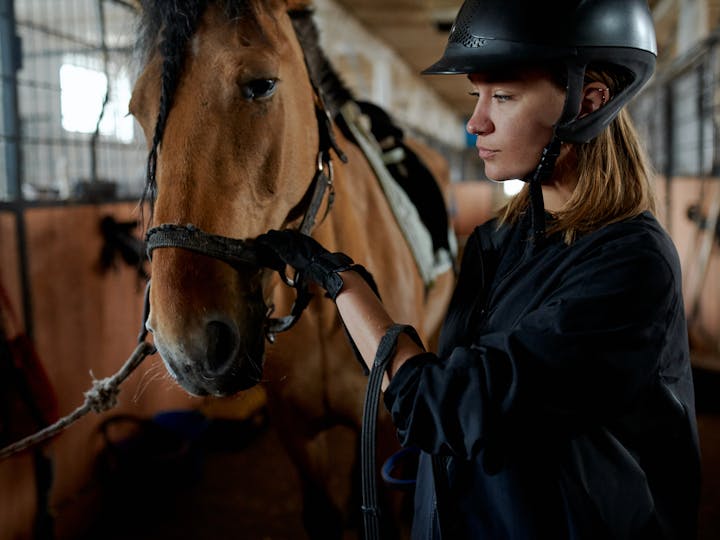Trust between a person and their animal companion takes time to build. They must get to know each other by engaging in daily activities and experiences.
Horses that trust their jockeys perform better in horse races. They’ve carefully built their relationship to learn commands and visual cues to work together well in a race.
You can log on to horse racing betting sites to make wagers on the best contenders. Evaluate the relationship between each jockey and their horse. How long have they been together? How well do they work together on the race track? It’s difficult to bet on a new pairing’s performance, especially if the horse is taking longer to trust the jockey.
Stay on Ground Level
You can’t saddle your horse right away after meeting for the first time. They’ll likely back away as you attempt to saddle or kick yourself off if you do secure it on the horse.
Start on the ground level by getting to know your horse. Begin with leading and simple commands. Instead of pulling the horse from the front, walk beside him. Move the forequarters and hindquarters to slowly build leadership and trust with your horse.
Maintain Consistency and Predictability
Horses thrive on a consistent routine. Portray the same body language and tone of voice as you interact with your horse. They will understand what you’re asking of them with this consistency, reducing anxiety and uncertainty.
Overly emotional reactions can scare or confuse your horse. Maintain calm interactions as you and your horse build trust together. Avoid sudden movements as these can also make trust-building harder.
Respect Your Horse’s Space and Body Language
Your horse’s mood and body language tell a lot about how the trust-building process is going. If your horse wants to maintain a distance from you during the first few meetings, give him that space.
Pinned ears, walking away from you, and fast swishing tails are signs of stress and discomfort. Rushing the process can do more harm than good. Don’t push to train with a rebellious horse. Take a step back and assess why the horse is unwilling to fulfill a command. Evaluate your tone, body language, and physical training conditions to find out why.
Spend Time Together Outside of Training
Take at least a little time each day to wind down with your horse. Interact together without focusing on training. Sit down together at lunchtime. Eat a picnic lunch as your horse consumes its feed or some tasty apples and carrots.
Before your training session, take time for grooming. Brush their mane and clean their hooves. Relax together in your favorite pasture. If the horse trusts you at this time, saddle him and take a leisurely ride around the area.
Use Positive Reinforcement
Reward good behavior by giving the horse small rewards. This could be giving a treat, scratching their withers, or verbally complimenting a job well done. Give the rewards immediately afterward so the positive reinforcement is linked to their good behavior.
Have Patience
Every horse has a different personality. Some are sociable and easy to interact with to build a trusting bond. Others are more careful, where it could take months or years for them to fully trust you. Remain patient and stay the course during the trust-building process.
Stay Present and Mindful
Horses’ intuitive personalities know when you’re distracted or emotional. Be fully present whether you’re training or spending recreational time together.
Put your phone on silent to reduce distractions. Staying fully present while bonding with your horse makes them feel important, slowly building trust, quickly, and more effectively. Keep your energy grounded so you and your horse can live in the moment together.



